Top 10 Cryptozoological Creatures that Have Yet to be Exploited in Film and Television
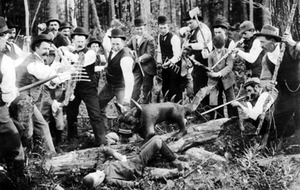 |
?Bigfoot, the Loch Ness Monster, the Jersey Devil and El Chupacabra are among the most famous cryptids – mysterious creatures people claim exist but have yet to be proven by science (and let’s face it, probably will never be). They’ve gotten their fair share of screen time on TV and in the movies, as the possibility of their existence is a natural thrill for the human imagination. Even lesser known beasts that exist more in folklore, urban legends and unverifiable accounts like the Thunderbird, the Dover Demon and the Lizard Man of Scape Ore Swamp (a Creature from the Black Lagoon wannabe) have gotten the limelight in shows like Secret Saturdays and Lost Tapes. The following 10 creatures have yet to be exploited on film or television (to our knowledge), but should be!
Daily List suggested by hezaa.
10) Mahamba
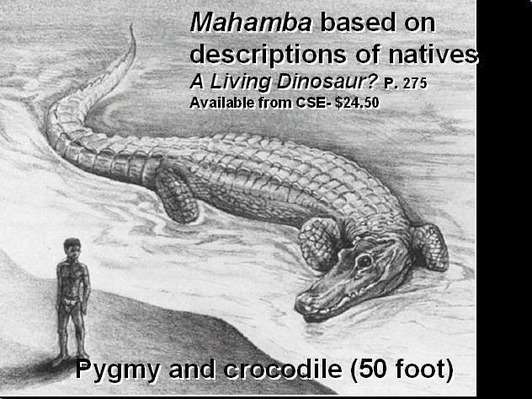 |
?Mahamba is a 50-foot crocodile possibly descended from prehistoric serpentine marine reptiles called mosasaurs. It reportedly lurks in swamps in the Democratic Republic of the Congo and eats canoes in one bite. Are you listening, Syfy Channel Original Movies Division? The remote Congo has many legendary cryptids, and that could be a whole story in itself.
9) The Flatwoods Monster
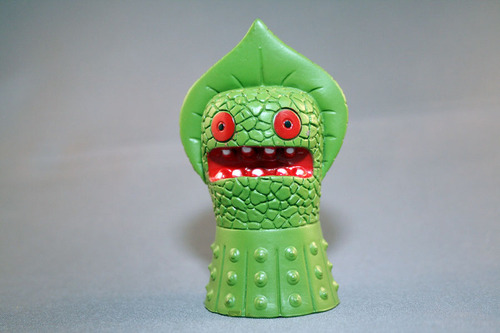 |
?West Virginia’s most famous cryptid is Mothman, who surpassed the small circle of people likely to be found reading John Keel books and came to the attention of Joe Q. Public thanks to the 2002 Richard Gere movie/X-Files homage The Mothman Prophecies. However, the Mountain State has another infamous mystery creature that first showed his ugly mug in 1952, about 14 years before his more fluttery cousin. Some think the monster might actually have been an alien, since there were earlier reports of a pulsating red orb that could have been a spaceship. A group of teenagers and a couple of adults followed the red light to where it had seemingly landed on a farm and had a close encounter with what they described as a 10-foot tall, green, glowing creature that had bulging eyes, a head or cowl shaped like an Ace of Spades and a pleated skirt. The monster emitted a shrill hiss and glided toward the group, causing everyone to flee in terror. Witnesses later reported illness related to a mist spewed by the creature. Like Mothman, some think the Flatwoods Monster was nothing more than people scared shitless by a barn owl, but that explanation is no fun.
8) Phantom Kangaroos
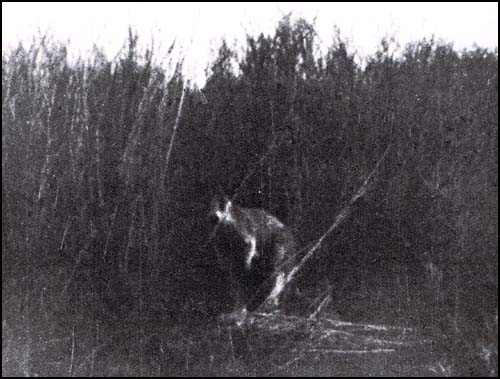 |
?They’ve been seen all over the world for decades in places they don’t belong, hauntingly hopping about and munching on lawns. Kangaroos may be native to Australia, but that hasn’t stopped them from bringing their adorable terror to other countries around the world. It can be unsettling when you run across a sizeable creature that has no easy reason for being there, and then pounces off into the mist never to be seen again. Sure, it’s most likely that many of these are escaped specimens from zoos, but the fact that beasts from far-off places might be peering at you through the weeds and trees behind the local Denny’s is a spine-tingling thought. The U.K. has had a small and mostly verifiable population of wallabies (which are not kangaroos, but close enough for us) since the 1930s, and there is a colony of wild kangaroos living an hour outside Paris. Japan is currently undergoing a wave of phantom kangaroo sightings. The U.S. had a spate of sightings in the 1970s, and one really creepy photo exists from an encounter in Wisconsin (see above). And if you want a phantom kangaroo story to adapt for the big or small screen, one creature supposedly went amuck in Tennessee in the 1930s, betraying its plant-eating ways and devouring several animals, including a bunch of German shepherds!
7) Spring Heeled Jack
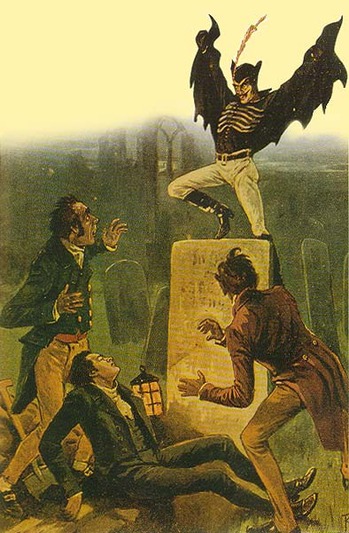 |
?Spring Heeled Jack blurred the line between man and monster as he terrorized Victorian England with his mischievous antics. Jack was said to have looked like a devil and to have worn a helmet, metal claws, a black cloak and tight-fitting clothes. So, basically, he was Batman and Wolverine mixed into one – Dark Claw! But he also had inhuman features (which is why we include him on this list), such as fiery red eyes and the abilities to leap to impressive heights and breathe flames. Jack mainly was a gentlemanly figure who lived to frighten and mystify, jumping into the path of pedestrians to surprise them and then leaping away over walls and fences, shrieking with laughter into the night. He also had a more sinister side and was reported to have forcefully felt up a few innocent women. Whether Jack was just a product of mass hysteria or based somewhere in truth, he became a part of popular culture in mid-19th Century British fiction. Jack has been mostly forgotten in recent years, but you know this is a historical superhero film just waiting to happen.
6) The Hodag
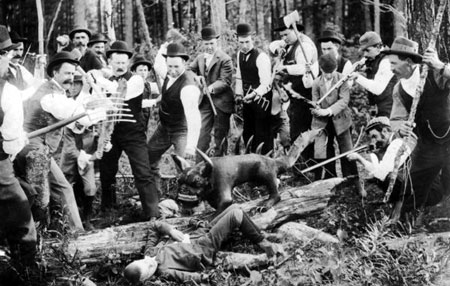 |
?This beastie is Rhinelander, Wisconsin’s own version of the Jersey Devil. It’s also obviously a big hoax, but that hasn’t stopped it from becoming a legend in its own backyard. In 1893, admitted local prankster Eugene Shepard spun a wacky tale about encountering a ferocious, seven-foot long, stout beast that had a huge head, fangs, horns, black fur and spouted fire and smoke from its nose. It also had an appetite for bulldogs. Supposedly, Shepard gathered a posse of lumberjacks that took the Hodag down with dynamite and brought back the charred corpse for everyone to see. Three years later, Shepard “captured” a live Hodag and entranced the town by putting it on display. While it turned out that Shepard was a skilled showman who had created the beast out of a tree stump and ox and cow parts and moved it with wires, the Hodag exhibit remained popular. The Hodag was later destroyed in a fire, but its legacy lives on in a photo postcard made by Shepard depicting the capture of the beast, as the town’s mascot and as the namesake of the annual Hodag Country Festival that attracts popular musicians. A movie about just the hoax would be entertaining in its own right!
—-
5) The Montauk Monster
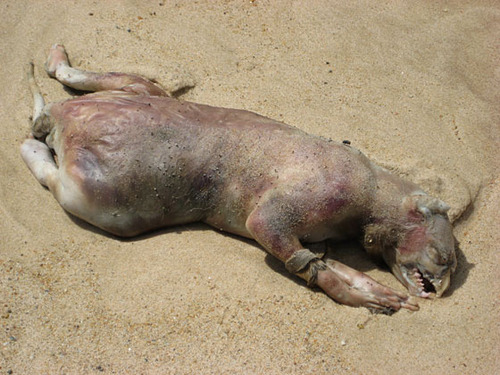 |
?Imagine strolling along a beach on a warm summer day, sand squeezing gently between your toes as gentle waves pound the shoreline and you debate with your friends about which flavor of Italian Ice is the best. (Lemon, all the way.) Suddenly, a pungent aroma slaps you in the nose and your eyes follow a trail of bustling flies down to a rotting corpse that the sea has spat upon the beach. You recognize that it’s definitely some kind of land animal that must have drowned, but you can’t for the life of you identify just what in the hell species it could be. It looks like a lot of creatures, but not quite. That, we illustratively imagine, is the kind of experience beachgoers had when they encountered a mostly hairless, partially decomposed creature on a beach near Montauk, New York in July of 2008. Cell phone pictures of the dead beast have circulated and experts can’t seem to agree on what it was. A raccoon is the current leading theory, but others think it could have been a dog, a turtle or a really big rat. We prefer the alternate theory – that the creature was a deformed mutant created as the nearby Plum Island Animal Disease Center, a government animal testing facility. Also keep in mind that Montauk is the home of the former military bases Camp Hero and Montauk Air Force Station, where the government supposedly conducted dangerous time travel experiments in the early 1950s (a.k.a. The Montauk Project). Could the Montauk Monster have been some creature from an earlier age brought forth in time??? That would kick ass. Get on it, Hollywood.
4) The Sirrush
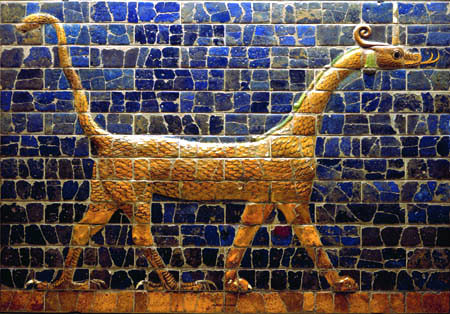 |
?It’s long been thought by some that some ancient legends of strange beasts might have had a basis in truth, depicting animals that are extinct today but might have survived long enough to encounter our ancestors. One such creature is the Sirrush, a dragon-like beast with a long neck, talon-like back legs and feline-like forelegs that is depicted on the Ishtar gate, constructed in Babylon about 2,600 years ago. The Sirrush was depicted on the gate alongside real animals like lions, and depictions of it remained the same throughout the centuries in Babylonian artwork, unlike the ever-changing appearances of mythical creatures. A Babylonian creature that could have been the Sirrush also appeared in some versions of the Bible in the deuterocanonical story “Bel and the Dragon,” in which it was slain by Daniel. Some cryptozoologists think the Babylonians encountered the Sirrush in Africa or imported it and that it was a surviving dinosaur. And some people think dinosaurs exist in Central Africa until this day. In any case, where is our Bible movie with dinosaurs?
3) Champ
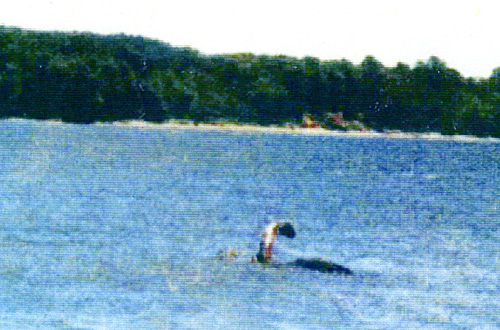 |
?While the Loch Ness Monster generally gets most of the attention, just about every lake in the world has tales of its own serpent. Lake Champlain, a body of water that is similar in size to Loch Ness and borders Quebec, New York and Vermont is no different, but Champ (as it’s affectionately called) has had a high number of sightings and supposed evidence that rivals her Scottish cousin. The first recorded sighting of Champ (aside from Native American legends and a probably apocryphal account of French explorer Samuel de Champlain spotting the beast while fighting Iroquois on the banks of the lake) was in 1883, fifty years before Nessie became a widely known phenomenon. And compared to the Loch Ness Monster, there is similar but perhaps slightly more convincing evidence of Champ’s existence (as convincing as this type of evidence gets, anyway). There are somewhat clearer photos and videos of Champ, recent echolocation recordings of sounds made by an unidentified large animal in the lake, and a government report from 2008 suggesting some unknown factor had been causing unusual fluctuations in fish populations – which proponents of Champ of course connected to the monster’s dining schedule. You’re just going to have to take Wikipedia’s word on the last point, since we can’t be bothered to dig through multiple 600-page government documents about sea lamprey control programs in Lake Champlain. Champ is also the mascot of the Class A baseball team The Vermont Lake Monsters. Oh no, we foresee some crappy CGI movie about sea monsters playing baseball!
2) Batsquatch
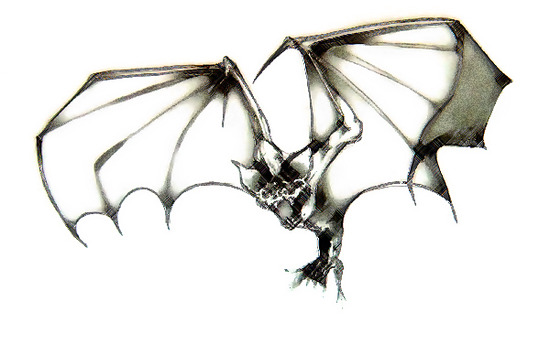 |
?Since Sasquatch wasn’t cool enough on his own, there is now supposedly a version of him that can fly. Batsquatch is said to live near Mt. Saint Helens and possibly appeared during the volcano’s eruption in 1980, a winged harbinger of doom with bright red eyes, similar to the more renowned Mothman from West Virginia. Batsquatch is described as a nocturnal primate with bat-like features, purple skin and wings like a pteranodon, who is blamed for the disappearance of various livestock in the area. The only documented sighting is said to be from a mountain climber named Butch Whittaker, who claimed to have taken pictures of the soaring beast in 1994. Good luck trying to find any of those photos on the Internet. Truth be told, every last damned thing about Batsquatch seems like a hoax, especially if you visit the site dedicated to the creature. But that doesn’t mean Batsquatch wouldn’t be a killer idea for a movie. The name sells itself.
1) The Bloop
 |
?The cool thing about the Bloop is that it’s very real, its existence supported by underwater sound recordings made by the U.S. National Oceanic and Atmospheric Administration (NOAA) throughout the summer of 1997. The Bloop (nicknamed thus because that’s what it sounds like) was detected several times in a remote section of the Pacific Ocean, west of the southern tip of South America. It was an ultra-low frequency but extremely strong sound that matched the kind of noises made by marine creatures. However, it was much louder than any known animal, suggesting the Bloop might be bigger than the Blue Whale, the largest animal known to have ever existed (or perhaps the Bloop is just the loudest creature known to man. Or both). The Bloop is such a fascinating yet freaky subject that it has already inspired a few novelists, although the creature hasn’t made it to the big or small screen yet that we know of (not counting an alternate reality game for the movie Cloverfield that suggested its titular monster was the source). For a big screen adaptation, we suggest Hollywood put the novel The Loch by Steve Alten on the fast-track. Alten not only featured the Bloop; he also did one better and linked in to the Loch Ness Monster! Steve Alten is awesome. Another fun fact: The location of the Bloop was near the fictional sleeping place of Cthulhu in the works of H.P. Lovecraft. Uh oh.
